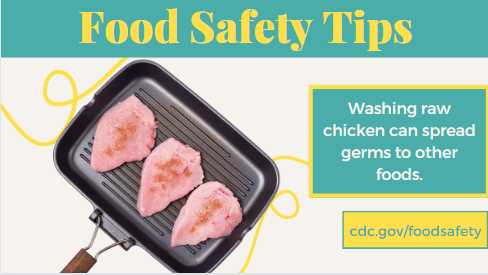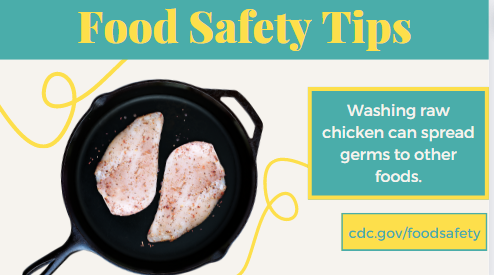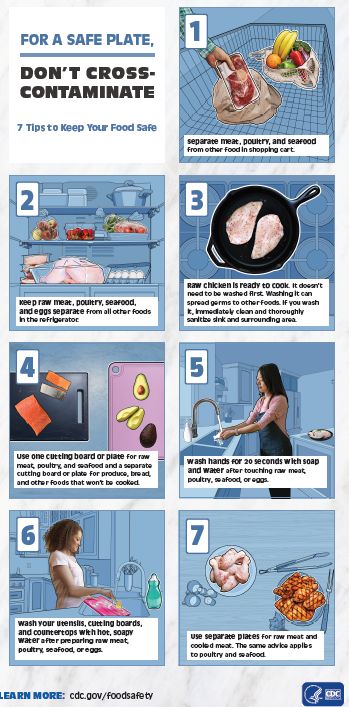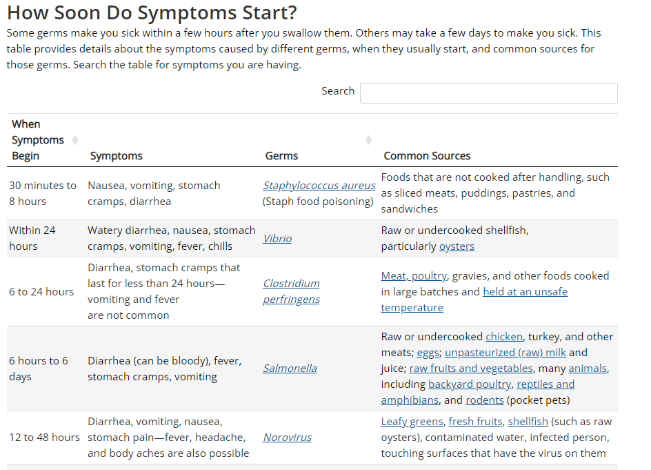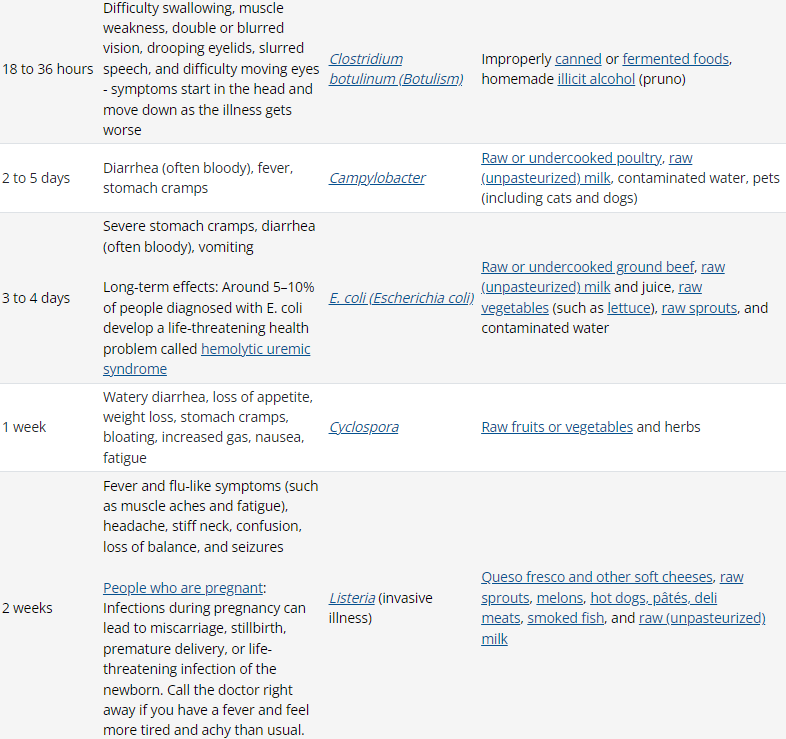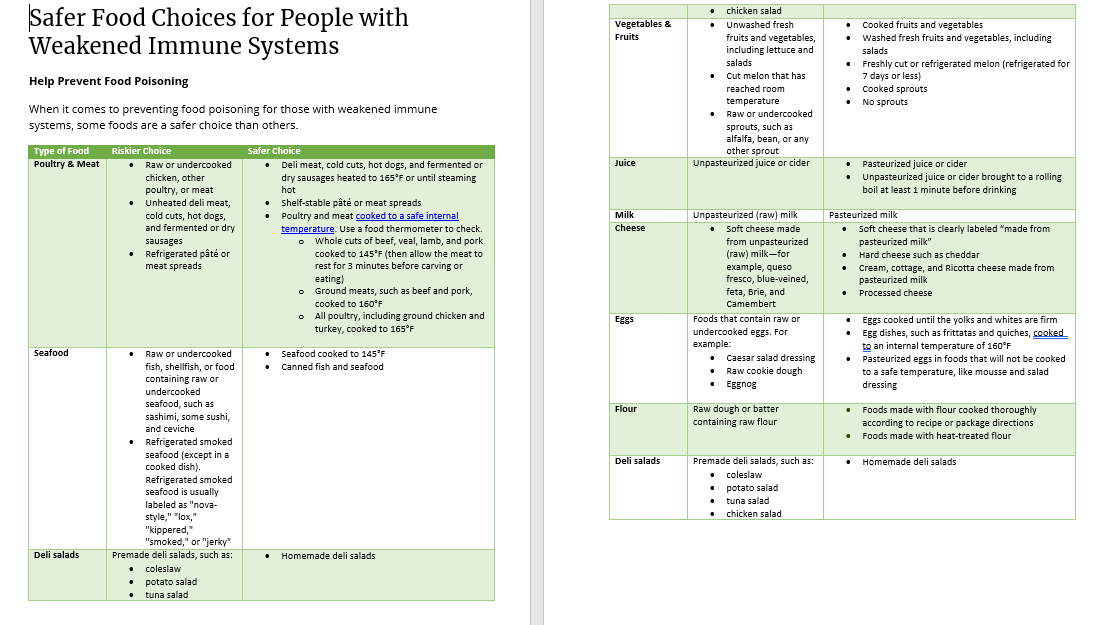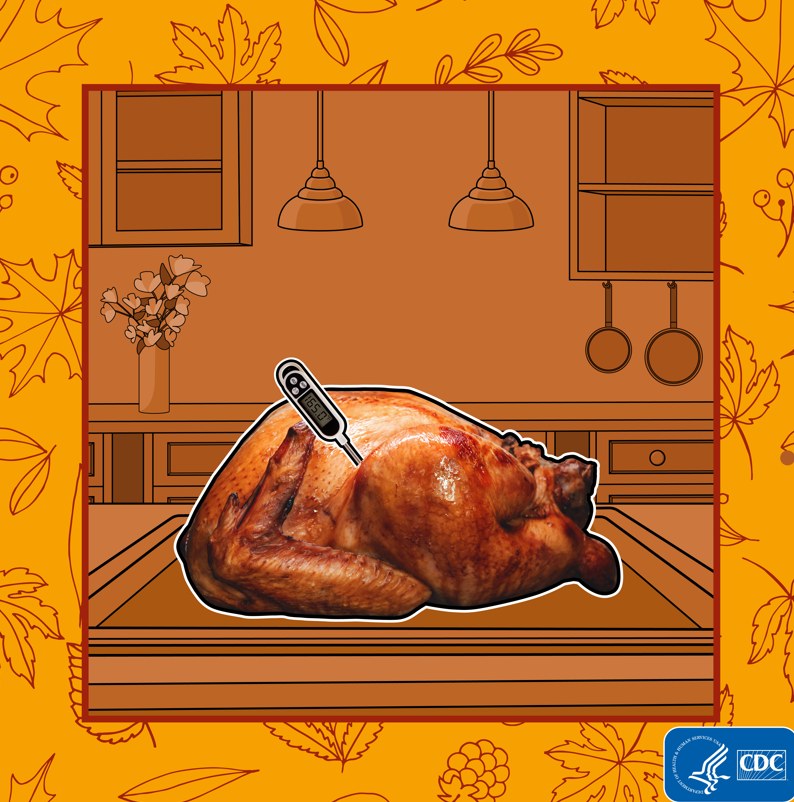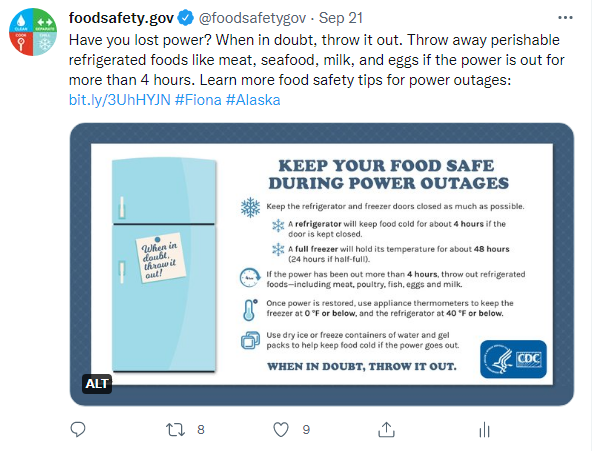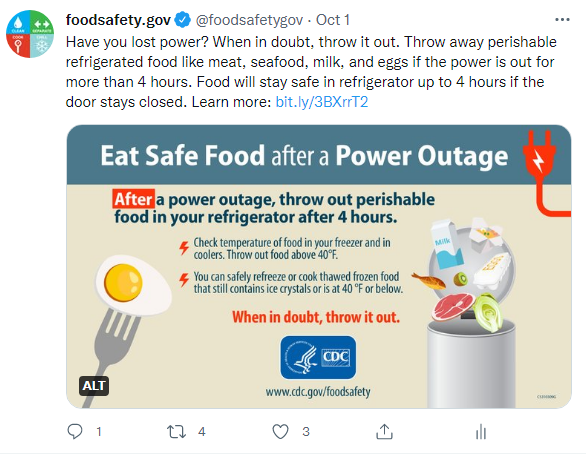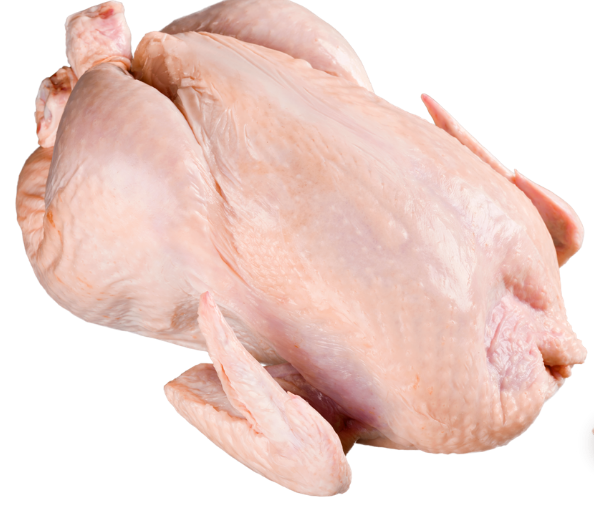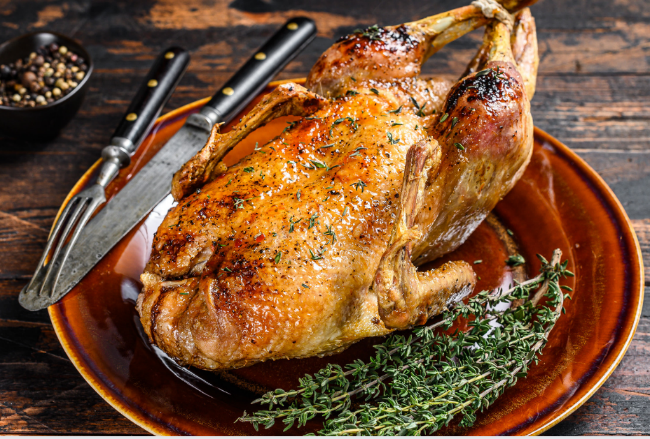Food Safety Messages to be Tested
Attachment #14- messages to be tested.docx
[OS] CDC/ATSDR Formative Research and Tool Development
Food Safety Messages to be Tested
OMB: 0920-1154
GenIC Clearance for CDC/ATSDR
Formative Research and Tool Development
Food Safety Communication Evaluation: Assessing Food Safety Messages, Knowledge, and Attitudes
Attachment 12 – Messages for testing
Contact: Sara Bresee, MPH
Office of the Director
Division of Foodborne, Waterborne, and Environmental Diseases
Centers for Disease Control and Prevention
1600 Clifton Road, NE
Atlanta, Georgia 30333
Phone: (404) 639.3371
Email: [email protected]
Messages for testing
Message/content (also add in if there is anything specific you would like to test—like focus on the colors etc). |
What |
Audience |
POC/Branch |
Compare these messages:
1. Run the water gently over the chicken to reduce splashing. 2. Then immediately clean the sink & area around the sink with hot soapy water & sanitize thoroughly. 3. Wash your hands for 20 seconds.
Wash chicken vs rinse chicken
|
SM post and potential website content – want to see which people prefer and which is most likely to cause behavior change, 1) cook to kill germs, 2) washing spreads germs, 3) paper towel alternative, 4) safe way to wash chicken |
Maybe target: AA/Black individuals H/L Older adults |
Kelsey/Cara |
Refrigerate perishable food within 2 hours. If the food is exposed to temperatures above 90°F (like a hot car or picnic), refrigerate it within 1 hour.
Refrigerate perishable food (including meat, chicken, turkey, seafood, eggs, cut fruit, cooked rice, and leftovers) within 2 hours. If the food is exposed to temperatures above 90°F (like a hot car or picnic), refrigerate it within 1 hour.
|
Message, specifically interested in people’s understanding of (1) “perishable”, (2) the 1 hour exception and (3) the examples of perishable |
|
Kelsey |
Use a food thermometer to ensure foods are cooked to a safe internal temperature:
|
Message, want to know what description of “done” is easier to understand or if they have suggestions |
|
Kelsey |
OR
|
Message, want to know if they understand ready-to-eat or need the examples |
|
Kelsey |
OR
|
Message, want to know if they understand “poultry” or need the chicken example |
|
Kelsey |
Use a food thermometer to ensure foods are cooked to a safe internal temperature:
|
Message, want to see what is easier to understand (rest or sit, untouched) |
|
Kelsey |
FSEM infographic with all steps
|
Full infographic with messages and images (more realistic than those tested in the past) |
|
Kelsey/Cara |
Updated food poisoning symptoms searchable table
|
Web page – test desktop and mobile version of table |
|
Kelsey |
Riskier/safer foods table for high-risk groups
|
Web page – the content is still under review and then we will build out the table (there is a different table for each group) and an infographic based on this content |
All high-risk groups |
Kelsey |
cooking meat graphics: thanksgiving mom, turkey bear, superhero post, rules of the game, grilling, holiday, and winter holiday meat video |
Messages, pick a few for participants to see side-by-side and state preference and why and which are most likely to impact behavior change |
|
Kelsey |
New winter 2022 graphics with food thermometer placement in meat
|
Graphic, want to know if they find it helpful to be shown and told where to place the thermometer and if that will impact behavior change. This version will be updated soon to be a GIF that shows the different places that need to be checked. |
|
Kelsey |
People who have 1 cutting board message- write message that explains to wash it in between uses, or just cut meat last
|
Health equity related message, since kitchen tools may be expensive. |
|
|
Show video of a physician giving advice |
Healthcare provider was most popular choice for people to pick where they want Food safety info from (PN styles): can we explore web or social messages from a doctor? (ie. Create a new video) |
|
|
Behavior/perception question: Explore what makes certain races (from our research, non- white) more worried about getting sick from salmonella in chicken |
|
|
|
Soft cheeses recommendation |
|
Pregnant people |
|
food safety in an emergency messages and graphics
|
SM |
General public |
Kelsey/Cara |
Different kinds of chicken images
|
|
|
|
LOWER PRIORITY for OD comms |
|
|
|
Compare raw flour: stock image post, family post, and cartoon post
|
|
|
Sarah D |
test this page: https://www.cdc.gov/foodsafety/communication/no-raw-dough.html
|
|
|
Sarah D |
Raw Milk messaging (Raw Milk Questions and Answers | Raw Milk | Food Safety | CDC)
|
Explore how people feel about messaging including special focus on more “fear based messaging” and what is most likely to impact behavior change |
“moveable middle” of raw milk drinkers |
SD |
|
|
|
|
Food waste prevention messages pulled from Tips to Reduce Food Waste | FDA
“Ugly” fruits and vegetables are still food safe! “Ugly” produce has physical imperfections but are not damaged or rotten. “Ugly” fruits and vegetables are safe and nutritious and can sometimes be found at discounted prices.
Do you have any fruit or vegetables that are bruised or damaged? Before you eat them, you can cut away any damaged or bruised areas to prevent food waste. Pulled from Fruit and Vegetable Safety | CDC |
Health equity issue- need to talk to SMEs about this, but we are not conscious of some of our wording on our pages (ie don't buy ugly vegetables/fruits) If we could get SMEs to agree on any of these messages, it would be great to test graphics |
|
|
WDPB
Message/content (also add in if there is anything specific you would like to test—like focus on the colors etc). |
What (SM/inforgraphic/message) |
Audience (see audience list above) |
POC/Branch |
Infographic |
Mothers and caretakers of infants |
Ashley Andujar/WDPBBrittany Robinson, WDPB |
ORPB
Message/content (also add in if there is anything specific you would like to test—like focus on the colors etc). |
What (SM/inforgraphic/message) |
Audience (see audience list above) |
POC/Branch |
Do not eat recalled ground beef. Throw it away.
Context: Looking to find out what people in these groups would do if they read this message. Would they follow the advice, or would they consider cooking it rather than wasting the food? |
Message |
Lower income people/ People who use food banks AI/AN people, people living in non-metro areas, people with no access to cars -people who cook/eat ground beef at home |
ORPB Comms
|
Do not eat recalled ground beef. Throw it away or return it to the store.
Context: Looking to find out what people in these groups would do if they read this message. In comparison to the message above, would they follow this advice given the option to return for a refund or would they still consider cooking it rather than wasting the food? |
Message |
Lower income people/ People who use food banks AI/AN people, people living in non-metro areas, people with no access to cars -people who cook/eat ground beef at home |
ORPB Comms
|
What People at Higher Risk Should Do
You are at higher risk for severe Listeria illness if you are pregnant, aged 65 or older, or have a weakened immune system due to certain medical conditions or treatments. If you are not in these groups, you are unlikely to get very sick from Listeria.
Listeria is especially harmful if you are pregnant, aged 65 or older, or have a weakened immune system due to certain medical conditions or treatments. If you are pregnant, it can cause pregnancy loss, premature birth, or a life-threatening infection in your newborn. Other people can be infected with Listeria, but they rarely become seriously ill. |
Web screenshot? |
-older adults 65+ -Pregnant people -Immuno-compromised -People who are not in the high risk groups -parents to children under 5 |
ORPB Comms
|
Listeria – new infographic for pregnant people in English and Spanish (draft)
|
Factsheet |
Pregnant people |
ORPB Comms
|
Listeria – existing fotonovela (English PDF, Español PDF) |
|
Hispanic/L pregenant people |
|
Listeria factsheet for older adults Listeria – new infographic for older adults and people with weakened immune system (draft)
|
Factsheet |
Older adults 65+ |
ORPB Comms
|
E. coli/Salmonella/Listeria symptoms module in outbreak postings
Context: These symptoms modules have been used for many years with few changes. We’re looking for feedback on the understandability or usefulness of their content from a variety of audiences.
Symptom language from here
Symptom language from: Listeria Outbreak Linked to Enoki Mushrooms | CDC
sytmptoms from this page CDC Issues Update on Search for Source of Midwestern E. coli Outbreak | CDC Online Newsroom | CDC E.coli on outbreak pages About E. coli:
E.coli Symptoms of Shiga toxin-producing E. coli (STEC) infection vary for each person, but often include severe stomach cramps, diarrhea (often bloody), and vomiting. Some people may have a fever, which usually is not very high (less than 101˚F/38.5˚C). Most people get better within 5 to 7 days. Some infections are very mild, but others are severe or even life-threatening. Most people with a STEC infection start feeling sick 3 to 4 days after eating or drinking something that contains the bacteria. However, illnesses can start anywhere from 1 to 10 days after exposure. Contact your healthcare provider if you have diarrhea that lasts for more than 3 days or diarrhea that is accompanied by a fever higher than 102˚F, bloody diarrhea, or so much vomiting that you cannot keep liquids down and you pass very little urine.
|
Message/web text |
-H/L individuals -AA/Black individuals -Parents to children under 5 -Older adults 65+ -Pregnant people (one H/L pregnant one?) -Immuno-compromised |
ORPB Comms |
Many groceries stores have shopper card or store loyalty programs. Enroll in these programs to track your grocery purchases. Shopper records can provide important information on foods, brands, and other details that can help outbreak investigators. Outbreak investigators only use your shopper records with your permission.
Context: We hear in outbreaks that people are often reluctant to give out shopper card info. This info helps tremendously during outbreaks, and we’re looking to find a message that may convince people we won’t/don’t share their private info. |
Web message |
-White, under 65 year olds... -H/L individuals -AA/Black individuals -Older adults 65+ |
ORPB PEA |
Always take steps to prevent getting sick from raw frozen breaded stuffed chicken products. Some frozen breaded stuffed chicken products may look browned and cooked but are, in fact, raw. They have been linked to several outbreaks, including a 2015 Salmonella outbreak.
Context: Looking to find what people would do if they read this message. Survey data indicates certain groups of people more likely to not use ovens or use microwaves to prepare |
Message |
-Lower income people -People who live in mobile-types of homes -Younger adults (18-29 years) |
ORPB PEA |
Irradiation webpage |
Web message/Infographic? |
|
ORPB PEA |
EDEB
Message/content(also add in if there is anything specific you would like to test—like focus on the colors etc). |
What (SM/inforgraphic/message) |
Audience (see audience list above) |
POC/Branch |
|
|
|
|
Behavioral questions about:
Asking people their behaviors about “pre-prepared”
|
|
|
Staci |
Cronobacter and the preparation of infant formula
|
|
Pregnant people |
Staci |
| File Type | application/vnd.openxmlformats-officedocument.wordprocessingml.document |
| Author | Bresee, Sara R. (CDC/DDID/NCEZID/DFWED) |
| File Modified | 0000-00-00 |
| File Created | 2025-05-19 |
© 2025 OMB.report | Privacy Policy
